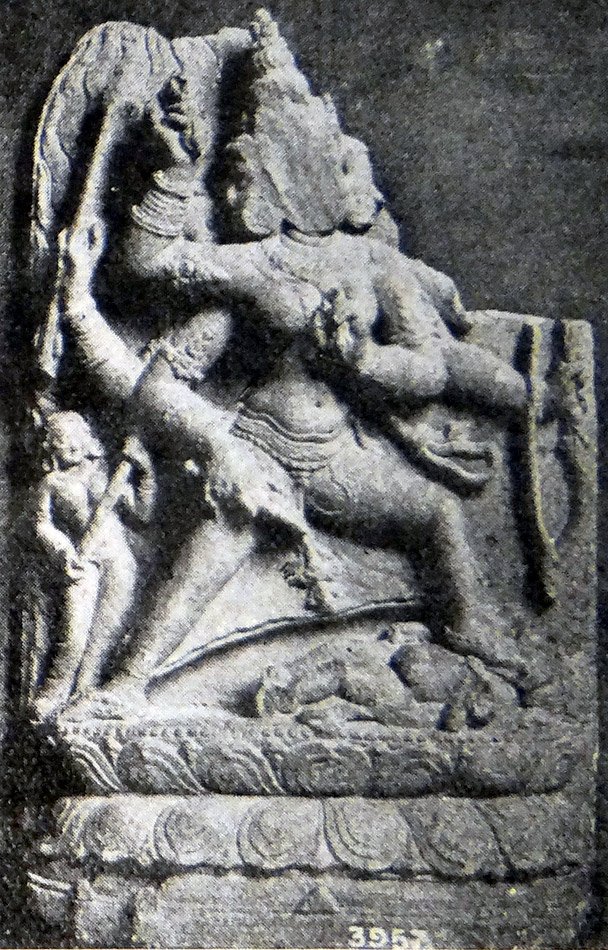The Indian Buddhist Iconography
by Benoytosh Bhattachacharyya | 1958 | 51,392 words | ISBN-10: 8173053138 | ISBN-13: 9788173053139
This page contains an iconography image of Emanations of Akshobhya: Parnashabari and represents figure 140 of the book Indian Buddhist Iconography, based on extracts of the Sadhanamala English translation. These plates and illustrations represent either photographs of sculptures or line-drawing reproductions of paintings or other representations of Buddhist artwork.
Figure 140 - Emanations of Akṣobhya: Parṇaśabarī

Figure 140: Parṇaśabarī
The worship of Parṇaśabarī, it is believed, is effective in preventing out-breaks of epidemics and in assuring safety to the terror-striken. The epithet ‘Piśācī’ given in the mantra shows that she was regarded as one of the demi-gods, half human, half divine. Two Sādhanas in the Sādhanamālā describe two forms of the goddess, one with the image of Akṣobhya on the crown and the other with that of Amoghasiddhi. In one, her faces are lit with pleasant smiles, and in another she smiles but has an irritated expression all the same. Curiously enough, the two images that have been discovered in Eastern Bengal, both have the effigies of Amoghasiddhi on the crown. [The Dhyāna describing Parṇaśabarī of yellow colour with the image of Akṣobhya on her crown, runs as follows...].
The mutilated image (Fig. 140) in the Indian Museum, with three faces and six arms trampling upon Gaṇeśa, probably represents this form of Parṇaśabarī, as the word ‘Vighna’ in the Sādhanamālā often refers to Gaṇeśa. The above-mentioned Sādhana, further states that Parṇaśabarī may have an alternative form with four arms and the image of Akṣobhya on the crown, in which case she will carry the Vajra and the Paraśu in the two right hands, and the Tarjanī with the noose, and the cluster of leaves in the two left, omitting the bow and the arrow.
Images of Parṇaśabarī are also found in Tibet and in China.
Colour: yellow;
Faces: three;
Arms: six;
Vāhana: Vighnas;
Āsana: pratyālīḍha;
